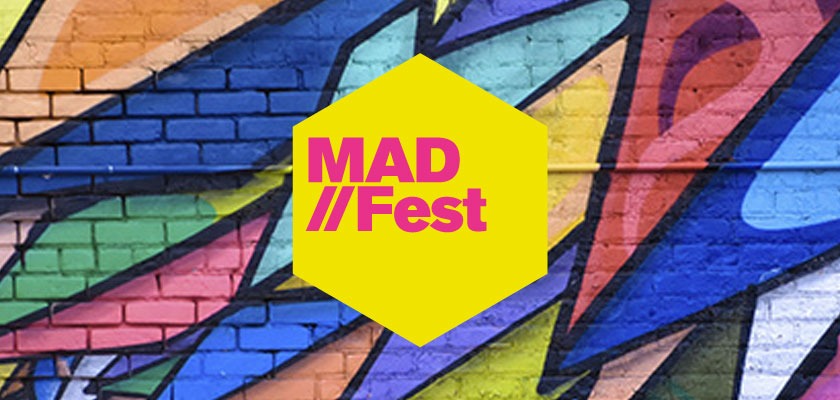
20 Nov
Mad About Marketing – Three key takeaways from MAD//Fest 2019
Written by Jess Bird, PR Senior Account Executive at Ingenuity.
Ingenuity headed to MAD//Fest this year to meet some of our industry’s best influencers, listen to inspiring content and network with some of the top brands out there. The day was full of engaging sessions, but the three that stood out the most were from Burger King, Dishoom and Innovid.
So, let’s get into it…
How to reinvent a legacy brand
What springs to mind when you think of Burger King? Some of you may now say the Whopper, following the viral campaign that changed the fast food chain’s marketing for the better earlier this year. But this hasn’t always been the case.
Burger King CMO Katie Evans, offered insight into the importance of repositioning a brand that has lost love. The once iconic product hadn’t been mentioned in UK media in over a decade, resulting in a generation who had never even heard of a Whopper, let alone tried one.
To reacquaint themselves with the heart of the brand, the team had to cast their minds back to the early to mid-nineties and ignore the fact that millennials across Twitter were questioning if the brand even existed anymore.
It was time to re-educate the market on what a Whopper was via brave and disruptive decisions. In short, ‘Go Whopper or go home’. The burger giant began its journey by working with agencies (such as BBH), to help breathe some much needed love into the brand and get the Whopper back on the map for the UK.
On the 17th April 2019, Burger King offered free Whoppers to any customer that walked through the doors of their 500 restaurants nationwide. The only catch? That’s all they could order. Burger King’s social media seemed to do little beyond talking about this campaign throughout the summer, in an effort to influence the younger demographic.
The result? 28% uptake in sales year on year and the campaign worked to halo the rest of the brand.
How culture, storytelling and experience can disrupt a category
Co-founder of Dishoom, Shamil Thakrar, revealed the secrets behind his vision before Dishoom opened back in 2010. He wanted the restaurant to mirror the heritage of Irani cafés. Famous for denoting elegance, community, families and experience, at their peak in the 1960s, there were almost four hundred of them. Thakrar even celebrated his 1st birthday at one.
Shared spaces and shared experiences, along with the power of food, help bring people together. That was the driver behind Thakrar’s creation. He wanted to bring something new to the dining scene across London in order to disrupt the category. Nine years and seven restaurants later, they now take in 45,000 guests a week and employ 950 people. Whether you feel this is slow or reasonably paced growth, for Dishoom it’s not about the speed of their expansion, but about the story they tell along the way. Everything they do fits into ‘The Dishoom Dharma’ aka their version of Bombay.
At the core of the brand is the belief that Dishoom food is the way to eradicate ‘otherness’ and create a feeling of acceptance amongst strangers. This is reflected through the restaurant celebrating all religions and their holidays throughout the year.
The future of TV
Innovid, the independent omni-channel advertising and analytics platform, discussed a few of their predictions for the future of TV and the developments we can expect to see.
With the rapid decline of the PC, we are left with the TV vs. phone battle for viewing. While you might think the small screen (aka mobile phones) will be the future of watching videos, it’s really only snackable, short form content, like TikTok and Snapchat, which will fly in this space. Long form content is still very much favoured by TV users and YouTube is even eyeing TV as the main platform to watch its content on.
We’re going to witness a move away from the traditional rating panel system on TVs (otherwise known as the ‘People Meter’, that identifies viewers behaviour), and instead see more of a dynamic sampling technology and increase in automatic content recognition. This technology will create a reading and try to accurately estimate what people actually watch. Your device will monitor what you’re tuning into and will map those results to a catalogue. Something that will help brands know whether they are hitting the spot with the content they are serving.
After a whole day of mixing with marketers, start-ups, disruptors, tech types and media folk, we walked away with tips and tricks from a brand perspective that can feed into the insight that informs all our client work, from lead gen to PR. Whether it was inspirational content or actionable insight, MAD//Fest was full of ideas that we look forward to bringing to fruition.
